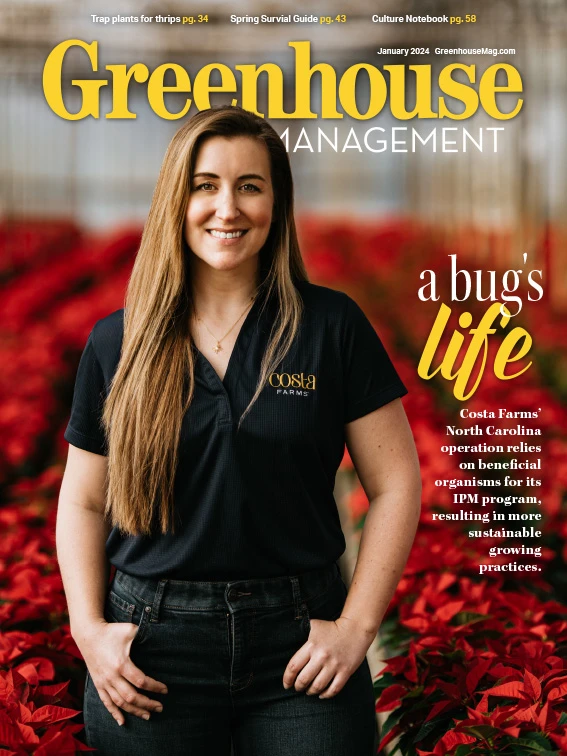
We asked Brian Jackson, the director of the Horticultural Substrates Laboratory at North Carolina State University, to share some advice on what to consider for growing media use and changes in production, as well as what to expect from suppliers. woodsubstrates.cals.ncsu.edu
Greenhouse Management: How often should growers evaluate their growing media needs throughout the year?
Brian Jackson: Begin with a close assessment (and continuous monitoring) of growing media inventory on site. Many growers may have leftover media inventory from 2023 as a result of over-ordering in 2022 or not producing the volume of crops in 2023 as they anticipated. Leftover inventories can help buffer potential substrate shortages that we may face in 2024. The practice of ordering early should still be employed for most growers, certainly for peat-based mixes. Aged bark substrate supplies remain strong across most of the U.S. (depending on location), but allowing some buffer time in placing/receiving orders helps. To minimize substrate supply/delivery needs, have (or build) a strong relationship with your growing media supplier(s), understand that cost increases are likely on some products and order early as opposed to just “over ordering,” which exacerbates supply chain problems for others.
GM: What should growers consider before starting any new crops?
BJ: The biggest challenges are often faced by growers who grow many different kinds of crops in different sizes/types of containers yet use the same substrate. As we know, some species are more finicky to grow than others and container size (height) can drastically change the air and water (drainage) properties of a mix making them difficult to manage unless irrigated independently. Also, if growers are growing very specific crops that require very specific substrates (i.e., orchids, succulents, etc.) work with the supplier to ensure as best as one can, that the product volumes will be available when needed.
GM: For those who plan to grow the same crops in ’24 as they did in ’23 – what questions should they be asking?
BJ: Growers should know, or ask their supplier, if any changes have been made to the composition of the substrate they are using (regardless of the substrate materials). If the substrate is different, ask the supplier’s technical advisors if any crop management changes are anticipated and if so, what and how to navigate those. If major shifts are made in the type/formulation of substrates, small trials could be conducted by the grower to learn how or if water and fertility management are needed.
GM: Are there any growing media supply chain issues to be aware of?
BJ: The overall poor (less than expected) Canadian peat harvest in 2023 has many in the industry concerned over the supply, availability and cost of peat in 2024. These uncertainties have occurred in recent years due to inclement weather during the summer harvesting months. The peat industry is assuring their customers they will work with them to prevent any major disruptions to whatever extent possible, but it could affect many. Customers who have long-standing and strong relationships with their peat/media supplier should hopefully be OK. In light of potential shortages in peat moss, more reliance on European peat (which had a better harvest year) and the use of more non-peat media components will be two of the most likely solutions to make up the lack of available peat. Coir products remain abundant across the U.S., and there are more commercial offerings of wood fiber products in 2024 than there have been in the past.

Explore the January 2024 Issue
Check out more from this issue and find your next story to read.
Latest from Greenhouse Management
- North Carolina Nursery & Landscape Association announces new executive vice president
- Plant Development Services, Inc. unveils plant varieties debuting in 2025
- Promo kit available to celebrate first National Wave Day on May 3
- Applications now open for American Floral Endowment graduate scholarships
- Endless Summer Hydrangeas celebrates 20 years with community plantings
- Invest in silver
- Garden Center magazine announces dates for 2025 Garden Center Conference & Expo
- USDA launches $2 billion in aid for floriculture growers





